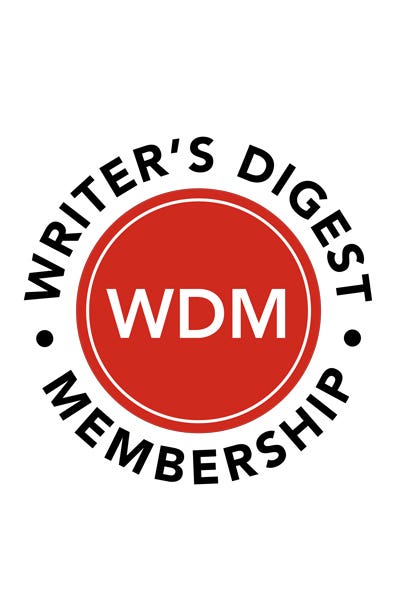Where do you fit?
Before you get your story on the shelf, you have to know your section.
Are you familiar with the expression, "I hope I'm in the right ballpark"? That applies to writing, then selling, a piece of short fiction. Either before or after you've sat down and rolled out your inspired narration, you have to decide where the material belongs. Only if you're in the right ballpark can you play on the field. Find the category—called a genre, in fiction—where your short fiction belongs, and the saga that drew your words onto paper may well find a home.
Let's investigate where your writing belongs.
Romance
Romance stories are a traditional form in which Jane meets Jack—or sometimes Tarzan. In fact, the object of Jane's delight doesn't matter much, though he should be a dreamboat in Jane's view (maybe not at first), and the reader ought to be able to empathize (he can't be a louse). These are stories of emotional fulfillment, but what the author dwells on across the bulk of the piece is the conflict, and the characters' overcoming of any obstacles to love.
Romance is a form of fiction (primarily for women) in which the barriers to a perfect union are torn away by persistence or just drop away through an altered understanding of the situation or through lucky events. The struggle comprising the main part of the story is mostly a psychological one, reflecting a female need to be wooed before being won. The ending is predetermined, so don't try to surprise us; the guy and girl wind up together—happily and, yes, definitely for the foreseeable future.
Mystery
Each short mystery centers on a crime of any type, from petty theft to the high stakes transgression of homicide. Some mystery shorts are all plot, with the characters fairly stereotyped and reality of detail scarcely adhered to. Spouses forever kill one another, and a mere insult supplies sufficient motive for murder. Stories based on a twist at the end continue to sell. Many readers love mystery shorts exactly because of some sudden surprise at the climax—and that's all they're seeking.
But the range within crime fiction has become broader in the last few years. Stories that used to conclude "good conquers evil" can now finish in a morally ambiguous way. The writing also may emphasize a more character-centered focus, and some shorts try to build in-depth and natural emotional reactions. Although a good plot-driven fable with a shock to the mind may still do well, these days the better-paying markets prefer this second means of story development. And for writers who want to aim high in the mystery genre, the combination of character, believable background and a plot that only becomes clear at the end is the ultimate package.
Mystery/crime shorts fall into pretty similar subgenres to the genre's longer novel form. The cozy story avoids the unpleasantness of blood, while authors who revel in the seedy side of crime produce noir/hardboiled yarns. The short can feature a hired private investigator who tracks a criminal to his lair for pay, or a cop can be the hero of the procedural type narrative. Then, too, as on television or in books—forget real life—the amateur sleuth might well stumble upon both the crime and its solution (usually in a cozy form).
Speculative fiction
Speculative is the wide umbrella category for three types of shorts: science fiction, fantasy and horror stories. What these categories of tales all have in common is that they violate the generally accepted truths of our usual world. While every piece of fiction can be considered "what if" writing, speculative stories expand the bounds beyond what might really happen, into the realm of, "Since no one knows, I can make it up." Yet while the laws of the universe may be suspended, don't forget: Each story must adhere to whatever reality the author creates.
Many different subgenres exist in the realm of science fiction. A near-future story, for instance, can focus on the problems in our world that might worsen over time: global warming, diminished water sources, microbes run amuck. Or the near-future can relate a saga of aliens come to call (or odd genetic mutations springing up, you name it) and how we deal with that in a society not too different from our own. Other traditional subgenres include android/robot stories, time travel conundrums, far future space opera in which humans (or maybe humanoids) make their way among the stars. Military SF, describing warfare of the future, has become very popular, as have stories based on virtual reality and gaming uses of computer-type systems. Don't forget alternate history, either, in which real history is made to deviate at a shockpoint, with a dramatic impact on subsequent events.
Another way of dividing short science fiction by type is to classify it according to whether the science involved is accurate, at least in part, or completely made up. Few writers create science fiction based on real science these days, and that's a form of story many editors would like to see again. Study up on astrophysics—or something a little easier—and write to sell.
Fantasy has often been perceived as science fiction's little sister, but to a large extent, it has a different market and different readers. Even within fantasy, tastes can be very exacting. Many publications are solely sword and sorcery based, such as a story set in something like the Middle Ages in an earthlike place where magic abounds. These yarns are a fantasy standard, with the protagonist often being someone with "the gift." Elves, dragons, healers and other assorted constituents add their talents to the story mix.
In addition to these fairy tales for grown-ups, fantasy includes stories a trifle harder to define (such as magical realism, in which reality is liberally tweaked, but still spoken of in realistic terms). Primarily, such narratives portray a dimension with less rigid physical laws than our own daily world. On occasion, the violation of those laws is inspirational (high fantasy) or a piece of fun (light fantasy), while other times the transcendence of stability brings about a darker nightmare verging on horror (dark fantasy). Fantasy can blend with our own commonplace settings or can take the reader to parallel universes and beyond. Heroes and heroines, often on a quest, can also simply stumble into a shop or onto an artifact that takes them on the most incredible of trips.
Horror comes as both traditional (vampires, werewolves, the ghost story that gives you chills) and newer forms, such as urban horror, in which the worst can occur in the most ordinary setting. The benchmarks of horror are the dark mood, the use of occult themes, and, to top it off, most often an ending in which an ordinary (or somewhat conventionally bad) character is consumed by ill-willed supernatural forces. The overall effect is that of icy fingers gripping at the heart and an inability to shake off the sense of cosmic evil. The intent of horror may—or may not—be to allow the reader a catharsis in experiencing this type of fear, but those addicted to the chiller love to have the thrill of terror induced.
Literary
Some genre authors make fun of literary work, little realizing that even genre pieces can rise to the stature of literary. But what is a literary story, anyway? A couple of ingredients seem to stand out. These stories show a distinct elegance of expression and offer an underpinning of comprehensive worldview. Literary works aren't just about what happens next; they narrate some broader understanding—bleak or sunny, simply wry or whatever else. They express the author's philosophy of life and attitude toward human interaction in general.
Unlike most genre fiction, a literary story may or may not offer an exact plot. Fiction of this type might just be a "slice of life" or merely constitute words that convey an overall feeling—a kind of narrative poetry (though this is rare). Literary stories are similar to genre in that they focus exclusively on what is being communicated. Even though we might not have the traditional story arc or definable plot, the "message" brought forward is a specific one, and the author mustn't deviate from the throughline or principle idea. So literary stories are not self-indulgent; they are as disciplined as all the rest, despite being free-form and less defined. On the other hand, literary stories certainly may present the usual arc, yet offer more subtle subtext and import than the typical genre piece.
Mainstream
Short fiction in a mainstream vein is not the same as literary. The writing is more comfortable for readers in that it's not designed to challenge or produce especially deep thought. These stories are of ordinary life, but supply the drama to which ordinary life only sometimes points.
Just because mainstream works don't fall into the category of "literary," doesn't mean they aren't well-written. They ought to be. But the overall impact needn't be profound, and the insights provided may be small and less a commentary on life itself than a glimpse into particular events and characters.
Romance, mystery, speculative, literary, mainstream—never lose sight of why you're writing the short, which is usually because the process is fun. Keep on writing, tracking markets, sending out subs. One day you're sure to see your stories in print.
Find more resources to help keep your finger on the pulse of your story's category.
This article appeared in the September 2003 issue of Writer's Digest.









